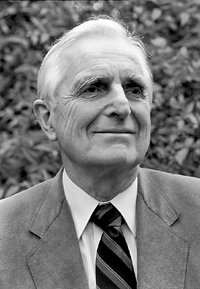|
My professional motivations are strongly oriented toward maximizing the benefit which society might derive from the advancements in the computer field. I might say then that my professional interests are toward the application of automatic information-handling equipment for helping human society, in the most significant way possible. – D. C. Engelbart; MEMORANDUM – Possibilities for Teaching Machine Activity at SRI; May 18, 1960. |
|
Many years ago, I dreamed that digital technology could greatly augment our collective human capabilities for dealing with complex, urgent problems. Computers, high-speed communications, displays, interfaces–it’s as if suddenly, in an evolutionary sense, we’re getting a super new nervous system to upgrade our collective social organisms… Since the first of these dreams got fixed in my head, decades ago, I’ve struggled with the realization that the sooner the world gets serious about pursuing the possibilities, the greater the chance that we can reduce the hazards facing this careening vessel carrying us along. – Douglas Engelbart; Dreaming of the Future; BYTE Magazine — 20’th Anniversary Issue; September, 1995. |
Douglas Engelbart invented the mouse, the graphical user interface, and the first working hypertext system, NLS, which was also the second computer system connected to the ARPANET.
At the end of World War II, Douglas Engelbart was a 20 year old US Navy radar technician in the Philippines. One day in a Red Cross library, he picked up a copy of the Atlantic Monthly from July, 1945, read Vannevar Bush’s article about his “memex” automated library system, and was profoundly influenced by the vision of the future of information technology.
Sixteen years later Engelbart published his own version of Bush’s vision, describing an advanced electronic information system in the paper “Augmenting Human Intellect: A Conceptual Framework”, prepared for the Air Force Office Of Scientific Research and Development, and extracted below:
|
Most of the structuring forms I’ll show you stem from the simple capability of being able to establish arbitrary linkages between different substructures, and of directing the computer subsequently to display a set of linked substructures with any relative positioning we might designate among the different substructures. You can designate as many different kinds of links as you wish, so that you can specify different display or manipulative treatment for the different types. – Douglas Engelbart, Augmenting Human Intellect: A Conceptual Framework, October 1962. |
Engelbart joined the Stanford Research Institute and in 1962 started work on Augment, a project to develop computer tools to augment human capabilities. As part of this effort, he developed a computer system called NLS (oN-Line System), to cross-reference research papers for sharing among geographically distributed researchers. NLS provided groupware capabilities, screen sharing among remote users, and reference links for moving between sentences within a research paper and from one research paper to another.
Engelbart had a vision of an interface between man and machine providing instant connection and communication. Partly in fulfillment of that dream, he invented the first graphical user interface and computer mouse, a picture of which can be found below.
Engelbart demonstrated NLS at the Fall Joint Computer Conference in 1968 in a presentation to several thousand conference participants. He demonstrated the mouse, the first working form of hypertext, and a form of video teleconferencing. A film of the event was made, in which the audience can be seen giving the talk a standing ovation. NLS was subsequently commercially distributed as the “Augment” application by McDonnell Douglas.
In tribute to his work, Engelbart’s NLS system was chosen as the second node on the ARPANET, giving him a role in the invention of the Internet as well as the Web.
Resources. The following web sites provide more information on Engelbart:
